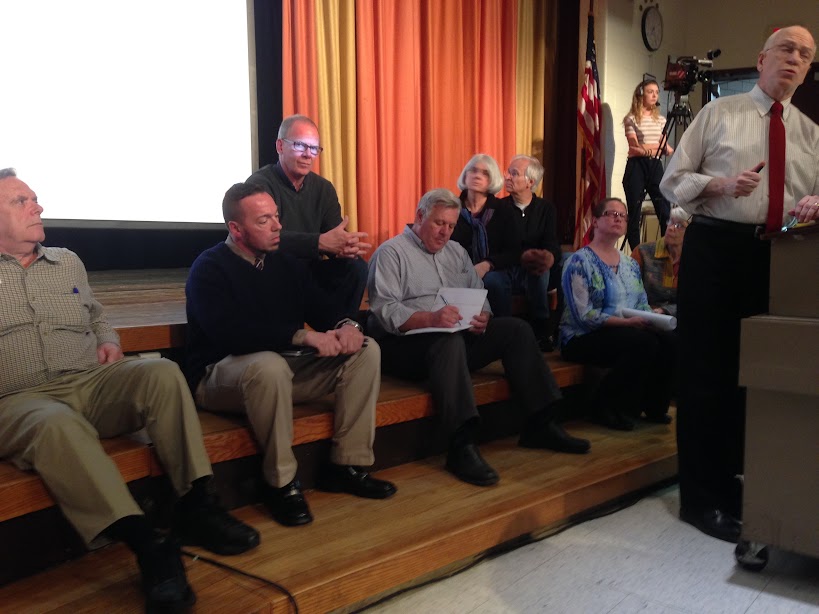"1,046 Bombers but Cologne Lived"?
The contrast in the coverage is instructive. There is nothing objectively incorrect about the Times piece by Max G. Tretheway, a World War II Australian flight instructor, who notes that some of his students took part in the raid. Still, there is nothing new, either, and the message is both intellectually and morally banal. Its perspective is the typical modern one of presumably sophisticated irony, as can be seen from the title: "1,046 Bombers but Cologne Lived." The irony derives from the gap between expectations and consequences. Like many modern commentators, Tretheway points to the exaggerated hopes of air force men in the ability of strategic bombing to determine the outcomes of wars. It might be news to the average reader of the Times--but not historians.
Even though the raid and resultant 5,000 fires destroyed "90 percent of the central city" (he tells us) killing 474 (actually a stunningly low figure, given the primitive technology of the day and compared with later missions), wounding 5,000, and leaving 45,000 people homeless:
He goes on to cite more statistics, leading to his inevitable conclusion:When survivors of the world's first 1,000-bomber raid ventured warily out of their shelters, there before their unbelieving eyes, towering majestically above the hellish carnage stood their beloved cathedral - superficially damaged, but with its twin spires still silhouetted defiantly against the bomber's moon.This miraculous sight strengthened the people's morale and determination through the rest of the war, as the Allies continued to pound an already flattened city long after any real targets remained.
The Allies released an incredible total of 1,996,036 metric tons of bombs on Germany and German-occupied Europe, more than half of which fell on cities and communication facilities. Some 593,000 civilians were killed, and 3.3 million dwellings were destroyed, leaving 7.5 million people homeless.Nothing that would have surprised Churchill, Roosevelt, or Stalin. (They did not improvise D-Day or "the Battle for Berlin" at the last minute because the air campaign did not work out). Amidst all the talk of much more sophisticated "smart bombs" and "shock and awe" during the two US wars with Iraq, we also saw other commentators remind us that the war is not really over until the victor has boots on the ground (to use that hackneyed phrase) and enjoys a drink in the officer club of his foe. What the extreme critics of air power neglect to acknowledge is its success. To say the Allied air campaigns did less than had been hoped to damage either production or morale is not to say that they were completely ineffectual: they also forced the diversion of vital resources from the front, and in the latter phases of the war, the Allies enjoyed complete superiority in the air, which greatly aided the campaign on the ground. And, although most Germans refused to be bombed into despair or revolt against the regime, a surprising number began to regard the Allied air campaign as the punishment by Providence for their crimes, including the Holocaust: a self-pitying attitude motivated by fear rather than guilt, to be sure, but remarkable nonetheless.
The most frequently bombed city was Berlin; many other urban areas were close behind.
And yet it was necessary for the Allies to invade the Continent, and to fight to the very gates of the capital before Germany finally capitulated in May 1945, three years after the first saturation bombing of Cologne.
But how did the British press see the event at the time? The Illustrated London News coverage--addressed to a British population suffering under the onslaught of Nazi bombers--sought to provide readers with hope: "Here was terrible proof of the growing power of the Royal Air Force. 'This proof,' in the words of the Prime Minister, 'is also herald of what Germany will receive, city by city, from now on.'"
were it possible to put 1000 bombers over Germany night after night, the war would be over by autumn. It is another of his beliefs that were it possible to send over 20,000 'planes to-day the war would be over tomorrow.
At the time, of course, no one really knew. It had never been tried. Advocates believed in their ability to deliver devastating blows from the air in part because they feared the enemy's capacity to do so. The bombing campaigns were terrible, but the cost was infinitesimal in comparison with what had been anticipated. The British expected that the German assault from the air would cause 2 million casualties in two months. In fact, the death toll from German air raids during the entire war was only 60,000.
 |
| the cathedral, virtually unscathed amidst the ruins (from the RAF report on the raid) |
Twisting the knife a wee bit, the magazine notes that the cathedral, at least in its present form, is not so old anyway, having been completed only in the late nineteenth century.
Just to make things clear, the magazine contrasts the scrupulous policy of RAF toward cultural heritage with that of the Luftwaffe and its so-called "Baedeker Raids" (1, 2, 3; the name derives from the popular German tourist guidebooks of the day) deliberately targeting cultural heritage--including many cathedrals older than that of Cologne.
Indeed, it presents the German bombing of historic Canterbury as deliberate and unjustified vengeance for the Cologne raid.
Oh--and that infographic?
When visiting friends for a party on this Memorial Day, I saw hanging on the wall a striking poster depicting US naval aviation resources, the work of a French geographer.
 |
| [enlarge] |
 |
| [actual figures from RAF] |
Not bad. Not bad at all.
* * *
• h.t. @B36Peacemaker for prompting me to write about this in the first place
• and follow @airminded who knows more about all this than I ever will (I assume he will correct me if I have made any gross errors here)
















